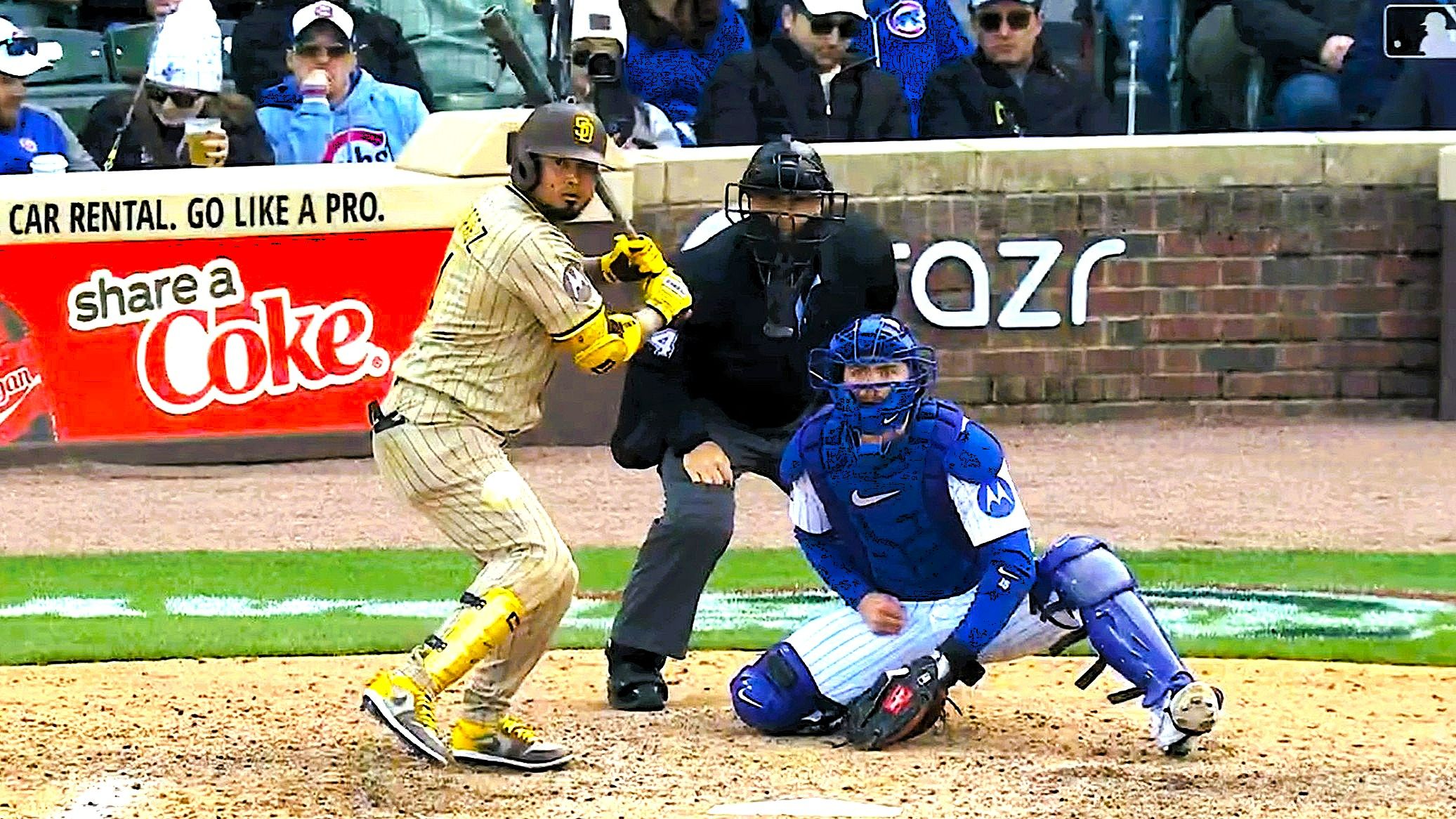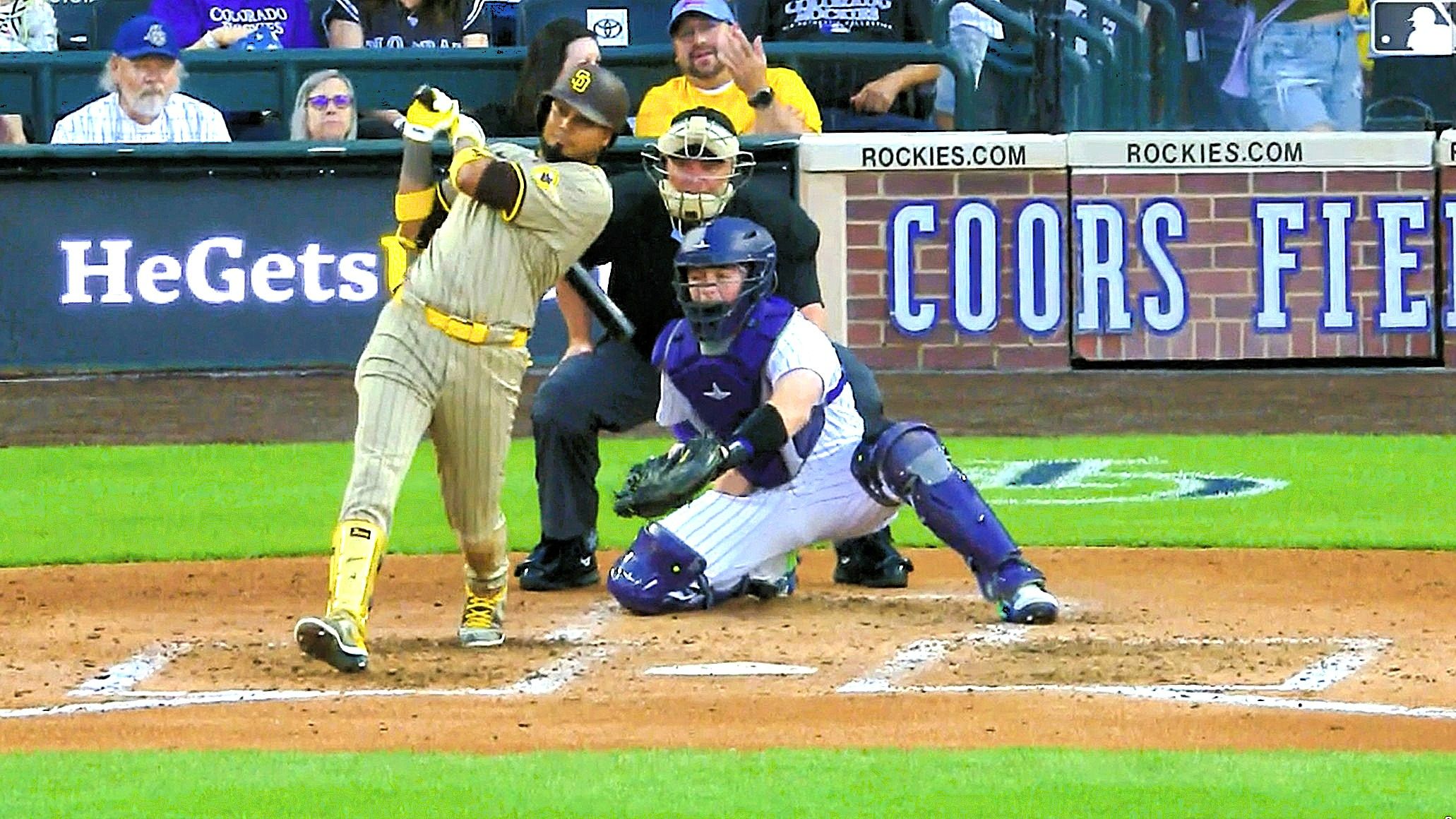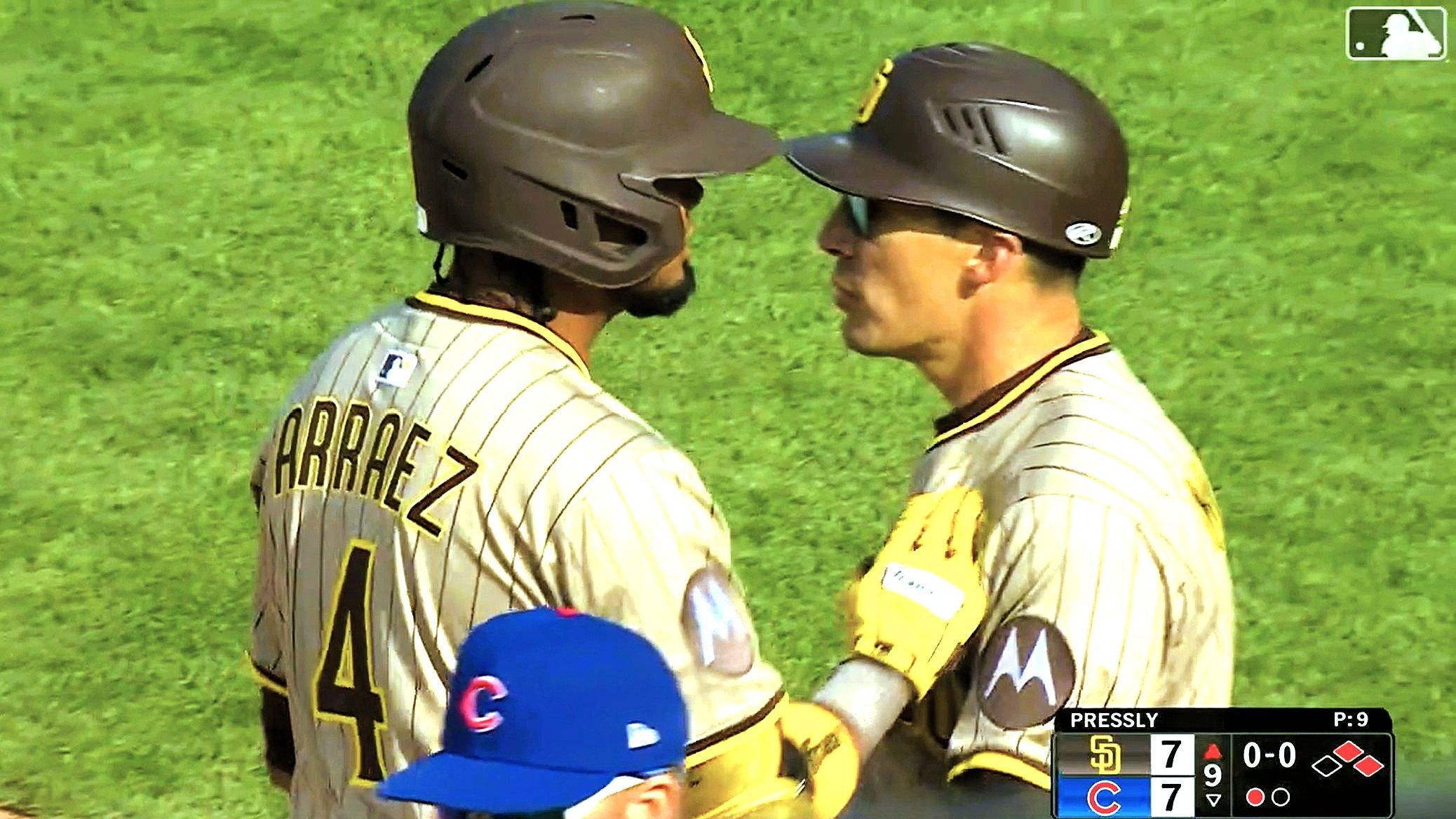Fácil, el acto de batear una pelota que viene en su dirección a una velocidad promedio de 120 Km/h, requiere de reflejos y condiciones físicas óptimas. No es lo único. Usted tendrá que estar preparado mentalmente para "adivinar" el tiro del lanzador, con el fin de hacer el swing debido y acorde con la rotación de la pelota en el aire. Ahora imagine esto. Tan difícil es batear que, antes de la temporada de 1969 las grandes ligas decidieron bajar la altura del montículo, desde donde el lanzador hace su "wind-up" para lanzar la pelota. Así las cosas, se "facilitó" un poco el asunto a los bateadores, ya que hasta ese momento apenas unos pocos pasaban la cifra de .300. Era muy difícil y lo sigue siendo. Dentro de ese universo, un venezolano se ha destacado en San Diego: Luís Arráez. Tanto, que a estas alturas de su carrera es comparado con el más reciente "purista" del bateo: Tony Gwynn. Un salón de la fama con los Padres, Gwynn era alguien excepcional y verlo en la goma implicaba espectáculo, digamos fue la primera "regadera" de San Diego (apodo por el que es conocido Luis)
ENGLISH VERSION (click here!)
Easy, the act of hitting a ball coming in your direction at an average speed of 120 km/h, requires optimal reflexes and physical conditions. It is not the only thing. You will have to be mentally prepared to “guess” the pitcher's throw, in order to swing properly and according to the rotation of the ball in the air. Now imagine this. It is so difficult to hit that, before the 1969 season, the major leagues decided to lower the height of the mound, from where the pitcher makes his “wind-up” to throw the ball. This made things a little “easier” for hitters, since up to that time only a few hit over .300. It was very difficult and still is. Within that universe, one Venezuelan has stood out in San Diego: Luis Arráez. So much so that at this point in his career he has been compared to the most recent “purist” of the batting world: Tony Gwynn. A hall of famer with the Padres, Gwynn was spectacular and seeing him on the rubber was a spectacle, let's say he was the first “watering can” of San Diego (nickname by which Luis is known).
Puesto mi lector en contexto, Arráez ha tenido un arranque lento en ésta zafra. parece ser algo que le afecta a los toleteros latinos: la primavera. Recién comienza el calor apretar, los bates se encienden. Y esto es -precisamente- lo que ha sucedido con Luis. Arrancó con promedio de AVG .200 en sus primeros 20 juegos, pero ha estado bateando .305 en sus últimos 15 ¿Lo ven ahora? Actualmente estacionado como 16avo. bateador de su liga con AVG .289, el bate de Arráez comienza a demostrar la razón por la cual se ha coronado campeón bate las últimas tres temporadas. Nos ha puesto a soñar con un cuarto título de bateo consecutivo y créanme cuando les digo algo: ningún pelotero que haya ganado 4 campeonatos de bateo seguido, está fuera del salón de la fama (a excepción de Bill Madlock). De lograrlo, Luis se uniría a: Ty Cobb, Tony Gwynn, Honus Wagner, Rod Carew, Rogers Hornsby, Stan Musial, Ted Williams, Wade Boggs, Dan Brouthers, Cap Anson, Miguel Cabrera, Roberto Clemente y Harry Heilmann. (sólo Miguel Cabrera espera los cinco años de retiro para entrar a Cooperstown).
ENGLISH VERSION (click here!)
Put my reader in context, Arráez has had a slow start to this season. It seems to be something that affects Latin hitters: spring. As soon as the heat starts to press, the bats turn on. And this is -precisely- what has happened with Luis. He started with an AVG of .200 in his first 20 games, but has been batting .305 in his last 15 games. Currently sitting as the 16th hitter in his league with a .289 AVG, Arráez's bat is starting to show why he's been crowned batting champion the last three seasons. He has got us dreaming of a fourth consecutive batting title and believe me when I tell you something: no player who has won 4 batting championships in a row is out of the hall of fame (with the exception of Bill Madlock). If he does, Luis would join: Ty Cobb, Tony Gwynn, Honus Wagner, Rod Carew, Rogers Hornsby, Stan Musial, Ted Williams, Wade Boggs, Dan Brouthers, Cap Anson, Miguel Cabrera, Roberto Clemente and Harry Heilmann (only Miguel Cabrera waits the five years of retirement to enter Cooperstown).


Todavía es muy pronto para asegurar nada. Una fuerte lesión y se acaba la magia. Así de duro es el béisbol. Aún así, vale soñar. Una tasa de ponches tan ridícula con menos del 5% de las veces al bate abanicando la brisa, el año pasado, la ha reducido a menos de 3% ésta temporada ¿no es eso extraordinario? Es decir ¿imaginan la vista de un pelotero que hace esto? Lo mejor de todo es que él escoge hacia donde batear, algo que solo hacen los verdaderos leñadores de élite. Escoger la parte del terreno donde caerá la pelota, requiere de un plus adicional: tener una conciencia perenne de a donde se necesita guiar la pelota. Y eso, señores, es algo que muy pocos escogidos hacen. Esperemos.
ENGLISH VERSION (click here!)
It is still too early to say for sure. One bad injury and the magic is over. That's how tough baseball is. Still, it's worth dreaming about. Such a ridiculous strikeout rate with less than 5% of at-bats fanning the breeze last year has reduced it to less than 3% this season, isn't that remarkable? I mean, imagine the sight of a ballplayer doing that? Best of all, he chooses which way to bat, something only the truly elite lumberjacks do. Choosing the part of the field where the ball will land requires an additional plus: having a perennial awareness of where the ball needs to be guided. And that, gentlemen, is something that mou few chosen ones do. Let's hope so.
¡Gracias por leer..! // Thank you for read..!
*Las estadísticas usadas son extraídas del [sitio de la MLB](https://www.mlb.com/es/stats)
The statistics used are extracted from [MLB site](https://www.mlb.com).
App para traducción // Translation App: [DeepL](https://www.deepl.com/translator)*

¿Quieres tener tu propio blog y la libertad financiera
proporcionada por el mundo cripto? ¡Haz clic en la firma!
My social networks








